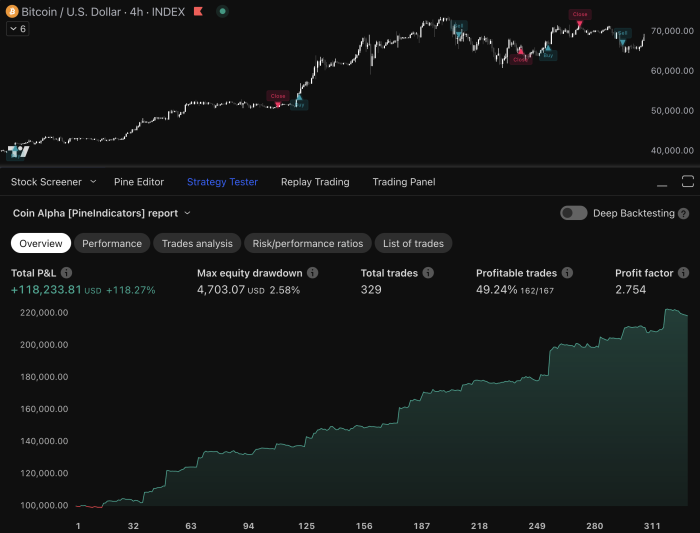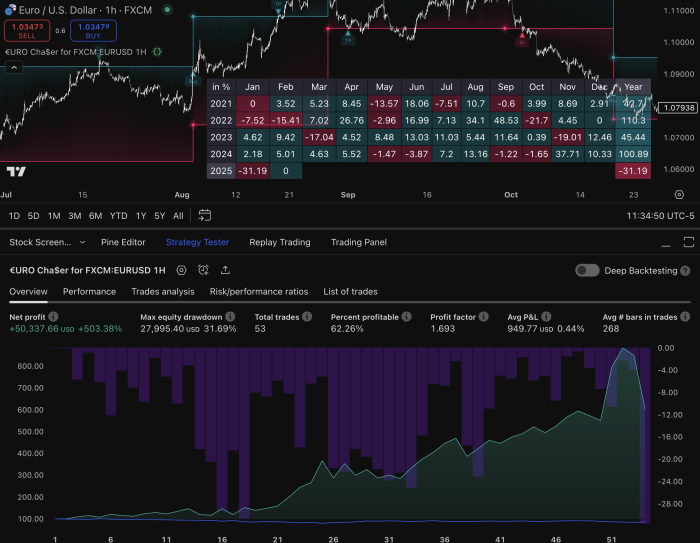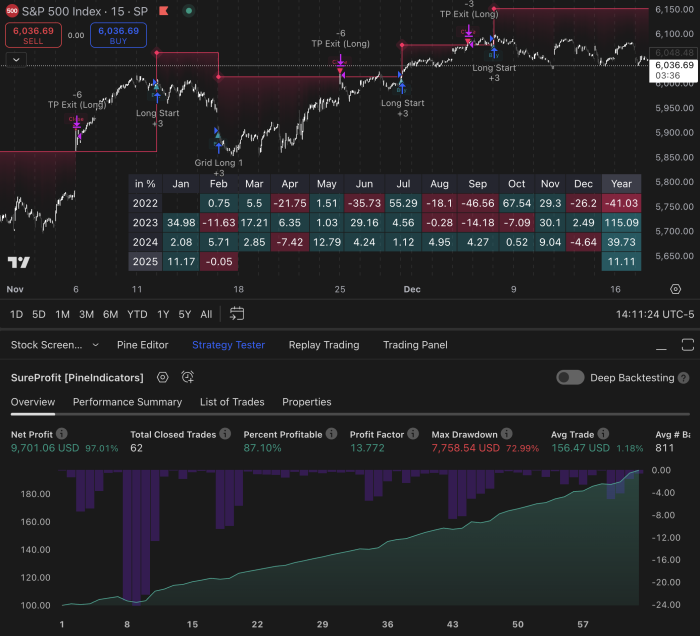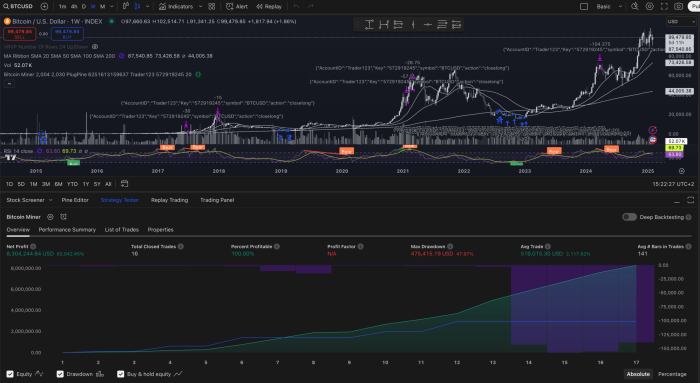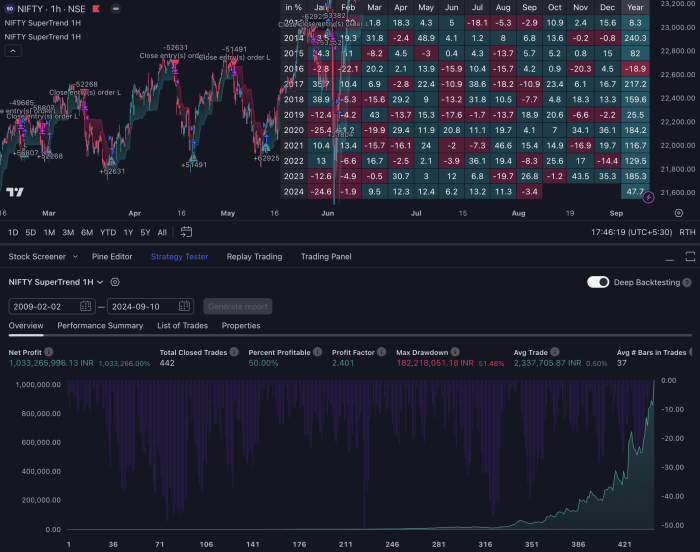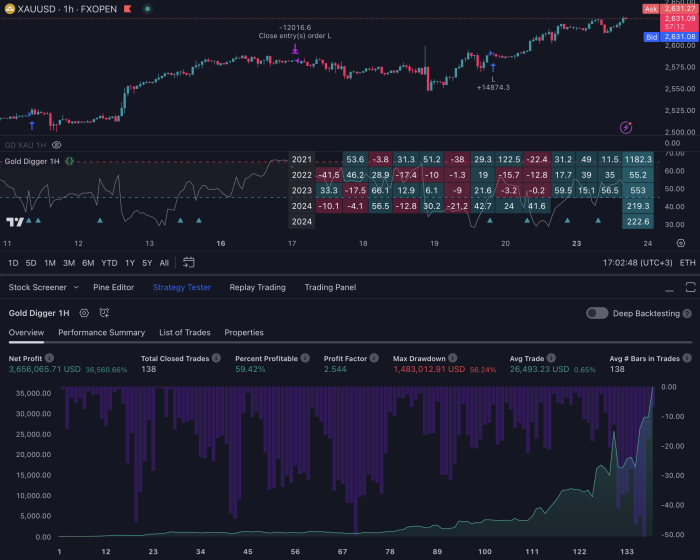In the fast-paced world of trading, the tools and indicators that traders rely on must evolve to keep pace with market dynamics. Upgrading indicators is not merely a matter of aesthetics or preference; it is a critical component of maintaining a competitive edge. As markets become increasingly complex, the ability to interpret data accurately and swiftly can mean the difference between profit and loss.
Upgraded indicators often incorporate the latest research and technological advancements, providing traders with more reliable signals and insights. For instance, a trader using an outdated moving average might miss crucial market shifts that a newer version could highlight, leading to missed opportunities or increased risk. Moreover, the financial landscape is continuously changing due to factors such as regulatory shifts, economic developments, and technological innovations.
As these changes occur, so too must the tools that traders use to navigate them. Upgraded indicators can offer enhanced functionalities, such as improved algorithms that account for volatility or new data sources that provide a more comprehensive view of market conditions. By staying current with indicator upgrades, traders can ensure they are not only reacting to market movements but also anticipating them, thereby positioning themselves advantageously in their trading strategies.
Key Takeaways
- Indicator upgrades are important for staying relevant and competitive in the trading market.
- New features and functionalities can provide valuable insights and improve decision-making.
- Customizing indicators allows traders to tailor their tools to their specific trading strategies.
- Advanced charting tools can enhance analysis and help traders make more informed decisions.
- Integrating multiple indicators can provide a more comprehensive view of market trends and patterns.
- Alert systems can help traders make timely decisions and take advantage of opportunities.
- Machine learning and AI technologies can provide predictive analysis and improve trading outcomes.
- Automated trading strategies can maximize efficiency and free up time for other tasks.
Exploring new features and functionalities
Multi-Timeframe Analysis
One of the key features of modern indicators is multi-timeframe analysis, which allows traders to view trends across different timeframes simultaneously. This feature provides a more nuanced understanding of market behavior, enabling traders to identify whether a trend is consistent across short-term and long-term charts.
Such insights are invaluable when making decisions about entry and exit points.
Advanced Statistical Methods and Machine Learning Algorithms
Upgraded indicators now incorporate advanced statistical methods and machine learning algorithms to refine their predictive capabilities. These enhancements allow for more accurate forecasting of price movements based on historical data patterns. For instance, indicators that utilize regression analysis can help traders identify potential support and resistance levels with greater precision.
Improved Trading Performance
By leveraging these new features, traders can develop more sophisticated strategies that are better aligned with current market conditions, ultimately leading to improved trading performance. With the ability to analyze market trends more accurately and make more informed decisions, traders can gain a competitive edge in the market.
Customizing indicators to fit your trading strategy

Customization is a key aspect of modern trading that allows traders to tailor indicators to their specific strategies and preferences. Many platforms now offer extensive customization options, enabling traders to adjust parameters such as period lengths, sensitivity levels, and visual representations. This flexibility is crucial because different trading styles—be it day trading, swing trading, or long-term investing—require distinct approaches to data interpretation.
For example, a day trader may prefer shorter moving averages to capture quick price movements, while a long-term investor might opt for longer averages to smooth out volatility. Furthermore, traders can combine multiple indicators into a single customized tool that reflects their unique approach. This integration can lead to the creation of hybrid indicators that synthesize various signals into one cohesive output.
For instance, a trader might combine a momentum indicator with a volatility measure to create a custom signal that indicates not only the strength of a trend but also its sustainability. Such tailored solutions empower traders to make informed decisions based on their individual risk tolerance and market outlook.
Leveraging advanced charting tools for better analysis
| Tool | Features | Benefits |
|---|---|---|
| TradingView | Customizable indicators, drawing tools, and real-time data | Enhanced technical analysis and decision-making |
| Thinkorswim | Advanced charting, studies, and pattern recognition | Identifying trading opportunities and trends |
| MetaTrader 4/5 | Multiple timeframes, analytical objects, and algorithmic trading | Comprehensive analysis and automated trading strategies |
Advanced charting tools have revolutionized the way traders analyze market data. These tools provide a visual representation of price movements and trends, making it easier for traders to identify patterns and make informed decisions. Features such as candlestick charts, heat maps, and volume profiles offer deeper insights into market behavior than traditional line charts.
For instance, candlestick patterns can reveal market sentiment and potential reversals, while volume profiles can indicate areas of significant buying or selling pressure.
Moreover, many advanced charting platforms now include features like drawing tools and technical analysis overlays that allow traders to annotate charts directly.
This capability enables traders to mark key support and resistance levels, trend lines, and other critical points of interest directly on their charts.
By utilizing these advanced charting tools, traders can enhance their analytical capabilities and develop more effective strategies based on visual data interpretation.
Integrating multiple indicators for comprehensive insights
The integration of multiple indicators is a powerful strategy that can provide comprehensive insights into market conditions. By combining different types of indicators—such as trend-following indicators, oscillators, and volume-based indicators—traders can gain a more holistic view of price action. For example, using a moving average in conjunction with the Relative Strength Index (RSI) allows traders to confirm trends while also assessing overbought or oversold conditions.
This multi-faceted approach reduces the likelihood of false signals and enhances decision-making accuracy. Additionally, integrating multiple indicators can help traders identify divergences that may signal potential reversals or continuations in trends. For instance, if price action is making new highs while an oscillator like the MACD is failing to do so, this divergence could indicate weakening momentum and a potential reversal point.
By employing a combination of indicators in their analysis, traders can develop more robust strategies that account for various market scenarios and improve their overall trading performance.
Utilizing alert systems for timely decision-making

In the realm of trading, timing is everything. The ability to react swiftly to market movements can significantly impact profitability. Alert systems have emerged as essential tools for traders seeking to stay ahead of the curve.
These systems can be programmed to notify traders when specific conditions are met—such as when an indicator crosses a certain threshold or when price reaches a predetermined level. This functionality allows traders to focus on other tasks while remaining informed about critical market developments. For example, a trader might set up alerts for when the price of an asset crosses above its 50-day moving average while simultaneously monitoring RSI levels for overbought conditions.
When these alerts trigger, the trader can quickly assess the situation and decide whether to enter or exit a position based on their strategy. The use of alert systems not only enhances efficiency but also helps mitigate emotional decision-making by providing objective signals based on pre-defined criteria.
Incorporating machine learning and AI technologies for predictive analysis
The integration of machine learning (ML) and artificial intelligence (AI) technologies into trading strategies has opened new frontiers in predictive analysis. These technologies enable traders to analyze vast amounts of historical data quickly and identify patterns that may not be immediately apparent through traditional methods. For instance, machine learning algorithms can be trained on historical price data to predict future price movements based on various factors such as market sentiment, economic indicators, and even social media trends.
One practical application of AI in trading is the development of algorithmic trading systems that automatically execute trades based on predefined criteria derived from predictive models. These systems can adapt to changing market conditions in real-time, optimizing trading strategies as new data becomes available. By leveraging machine learning and AI technologies, traders can enhance their predictive capabilities and make more informed decisions based on data-driven insights rather than relying solely on intuition or experience.
Maximizing efficiency with automated trading strategies
Automated trading strategies have gained popularity among traders seeking to maximize efficiency and minimize emotional biases in their decision-making processes. These strategies utilize algorithms to execute trades automatically based on predefined criteria set by the trader. By removing human intervention from the execution process, automated trading systems can respond to market changes instantaneously, capturing opportunities that may arise in volatile conditions.
For example, a trader might develop an automated strategy that triggers buy orders when specific technical indicators align—such as when the 20-day moving average crosses above the 50-day moving average while RSI indicates oversold conditions. This level of automation allows traders to capitalize on opportunities without being tethered to their screens throughout the day. Furthermore, automated strategies can be backtested against historical data to evaluate their effectiveness before being deployed in live markets.
This capability not only enhances confidence in the strategy but also allows for continuous refinement based on performance metrics. In conclusion, the landscape of trading is continually evolving, driven by advancements in technology and an ever-changing market environment. By understanding the importance of indicator upgrades, exploring new features, customizing tools to fit individual strategies, leveraging advanced charting techniques, integrating multiple indicators for comprehensive insights, utilizing alert systems for timely decision-making, incorporating machine learning and AI technologies for predictive analysis, and maximizing efficiency through automated trading strategies, traders can position themselves for success in this dynamic field.
If you are interested in upgrading your tradingview indicators, you may also want to check out this article on pine script indicators for stocks. This article provides valuable information on how to use pine script indicators effectively in your trading strategy. It can help you enhance your technical analysis and make more informed trading decisions.
FAQs
What is the TradingView indicator upgrade service?
The TradingView indicator upgrade service is a service offered to traders who use the TradingView platform and want to enhance their trading indicators with custom features, alerts, or other improvements.
How does the TradingView indicator upgrade service work?
Traders can request upgrades to their existing indicators by providing specific requirements to a developer or a service provider. The developer will then modify the indicator’s code to add the requested features and provide the upgraded version to the trader.
What are the benefits of using the TradingView indicator upgrade service?
The service allows traders to customize their indicators to better suit their trading strategies and preferences. This can lead to more effective analysis and decision-making, potentially improving trading performance.
How can I find a provider for the TradingView indicator upgrade service?
Traders can find providers for the service by searching online for TradingView indicator developers or by asking for recommendations in trading communities and forums. It’s important to research and choose a reputable and experienced provider.
What are some common upgrades that traders request for their TradingView indicators?
Common upgrades include adding custom alerts, integrating additional technical analysis tools, optimizing performance, and creating visual customization options. Traders may also request modifications to the indicator’s calculations or inputs.
Is the TradingView indicator upgrade service suitable for all traders?
The service is best suited for traders who are familiar with technical analysis and have a specific need for customizing their indicators. Traders who rely heavily on technical indicators for their trading decisions may find the service particularly beneficial.

